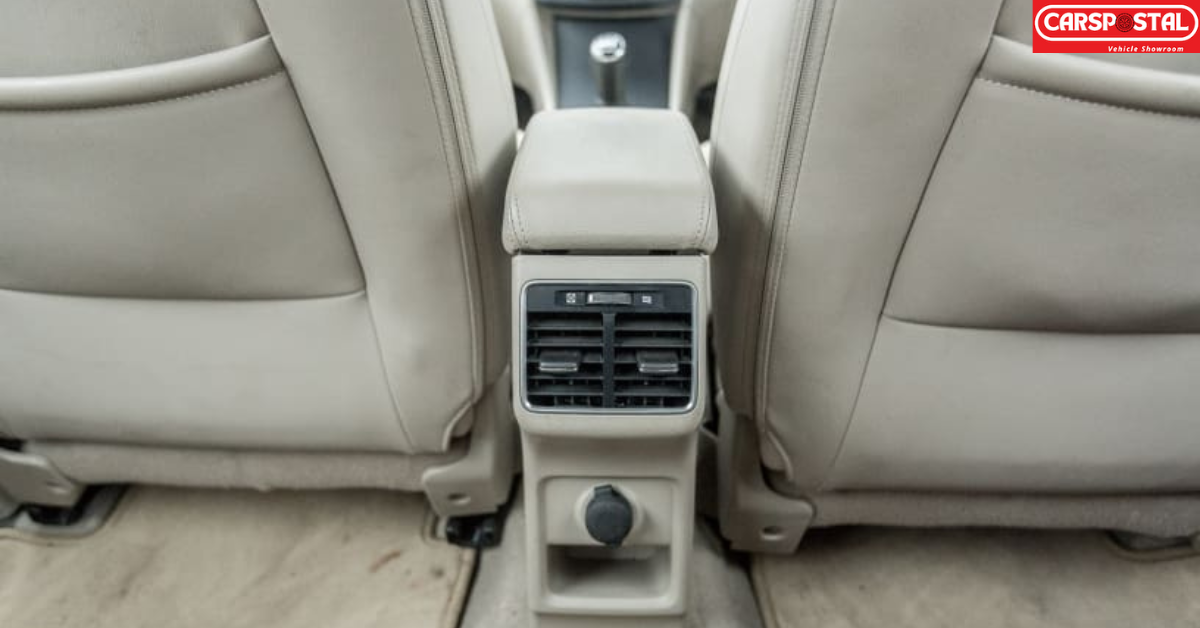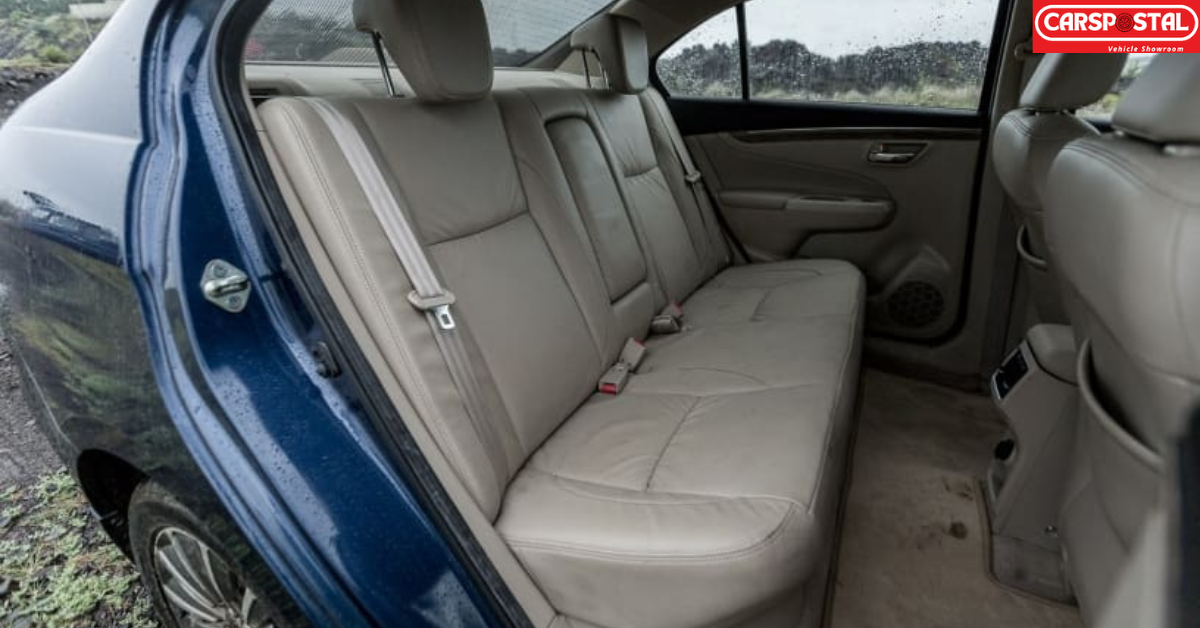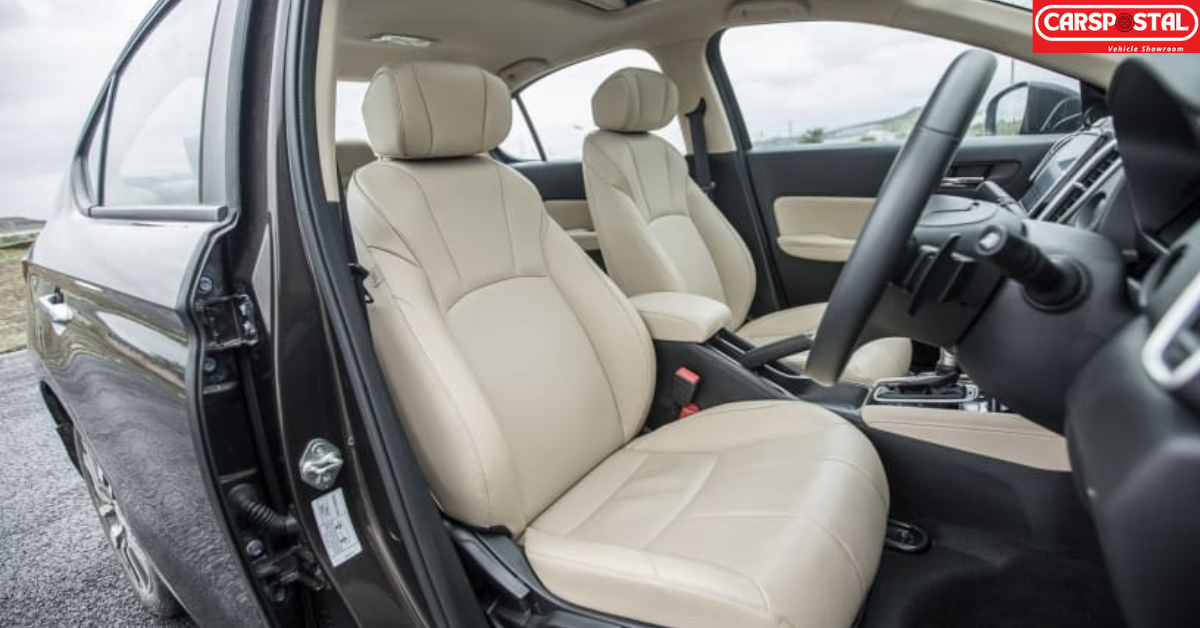
There was a time when the mid-size sedan segment was at its peak in India and everybody wanted a long premium sedan parked at their house but in the past few years, the craze for sedans has dropped down heavily. Now the Indian car market is preferring SUVs and hatchbacks over sedans. Last year, SUV sales in India were so large that now every car manufacturing company in the country is focused on adding new SUVs to their portfolio. Despite all this, some sedans like Honda City, Maruti Ciaz, and Hyundai Verna are still able to grab a fair amount of the car market. Today, we will talk about these 3 sedans and will give you a detailed comparison. We will look at the pros and cons of these sedans and see where they excel and fumble in terms of space, comfort, and practicality. In the end, we will give you our opinion on which one will be the right sedan for you.
Exterior Design-wise, all three cars have different curves and cosmetics. The Maruti Ciaz has a common, simple-looking design with a slim grill up front which ends are connected to the rectangle headlights. The grill holds the Suzuki logo in the middle and has a thick chrome line on the top. Below, on the front bumper, it has an air intake cut-out in the middle and fog lamps, surrounded by chrome lines, on both sides. On the side, Ciaz has body-colored rear view mirrors, chrome door handles, and not-so-new design alloy wheels. The rear has chunky taillamps and a slim chrome line on the boot lid.
The Hyundai Verna offers a sporty design with a large grill that has the Hyundai logo in the middle and sharp headlamps. The front bumper continues the sporty look and houses fog lamps on the sides. The side profile of the Verna has piano-black rearview mirrors, body-colored door handles, and sporty alloy wheels. Its taillights are slim and the rear bumper has a sporty chrome line. The Honda City follows elegant characteristics and offers the most upmarket looks. It has a thick chrome line below the bonnet that has the Honda logo in the middle and below it is the small grill. The headlights of Honda City are classy and blend well with the front facials. The bumper has cutouts in the middle for air intake and it houses the fog lamps. The side profile has body-colored rear view mirrors, chrome door handles, and nice alloy wheels that match its elegance. On the rear, the Honda City has a spoiler-like boot lid and cool slim tail lights.
On the inside, all three cars follow their exterior personalities. The simple exterior profile of the Maruti Ciaz can be seen on the inside too. It has a chunky dashboard and aged instrument cluster but the lighter tones, the faux wood trim’s matte finish, and the center console’s storage bay are good interior touches that even out the other not-so-attractive interior elements. 
The Hyundai Verna, following its outside personality, has a sporty interior with red stitching on the seats and red accents on the AC vents. The Verna’s new digital instrument cluster further enhances its sporty characteristics. Its dashboard is slim but the quality of the materials could have been better. The Honda City has the most upmarket interior just like the exterior. It has a slim dashboard with premium wood inserts and soft-touch materials. Its instrument cluster is also digital and fits perfectly with the interior theme.
The Verna has the coolest features in all three of these sedans. It has a digital instrument cluster that gives a modern feel. It has an 8-inch infotainment touchscreen system in the center which is very responsive and has large physical buttons below which make it very easy to use even while driving. It also has an electric sunroof, a 12V power plug in the front, a USB charging point at the back, connected car tech, rear AC vents, and up to 6 airbags. The feature that takes Verna to another level is the ventilated front seats.
 Talking about the features of Honda City also has a digital instrument cluster and it is the best in all three of these sedans. The digital instrument cluster of Honda City is so well designed that it looks like an analog unit. It shows various information including revs, trip info, and G-force. The Honda City has a lane watch system too which shows a video feed on the infotainment system from a camera under the left rear-view mirror. The touchscreen infotainment system of Honda City is average as it’s not as smooth and easy to use as Verna’s system. Other features of Honda City include an electric sunroof, wireless charger in the front, 12V power point at the back, rear AC vents, connected car tech, and up to 6 airbags.
Talking about the features of Honda City also has a digital instrument cluster and it is the best in all three of these sedans. The digital instrument cluster of Honda City is so well designed that it looks like an analog unit. It shows various information including revs, trip info, and G-force. The Honda City has a lane watch system too which shows a video feed on the infotainment system from a camera under the left rear-view mirror. The touchscreen infotainment system of Honda City is average as it’s not as smooth and easy to use as Verna’s system. Other features of Honda City include an electric sunroof, wireless charger in the front, 12V power point at the back, rear AC vents, connected car tech, and up to 6 airbags.
 The Maruti Ciaz has the least number of features in this comparison. It doesn’t even get an electric sunroof, connected car tech, and digital instrument cluster and the airbags are limited to 2 only. The Maruti Ciaz only has a rear windshield sunshade, rear AC vents, a not-too-good infotainment system, and a 12V power socket at the back.
The Maruti Ciaz has the least number of features in this comparison. It doesn’t even get an electric sunroof, connected car tech, and digital instrument cluster and the airbags are limited to 2 only. The Maruti Ciaz only has a rear windshield sunshade, rear AC vents, a not-too-good infotainment system, and a 12V power socket at the back.
The Honda City offers the best front-seat experience. Because of the low-set dash and the high-set seats, which are comfortable even when reclined, you have a fantastic view outside the cabin. The atmosphere is excellent here thanks to the comfortable seats and the big windows. The only drawback is that anyone more than six feet tall may find the headroom to be a little limiting. Verna’s seating position is completely different from Honda City’s. It promotes a low-slung, athletic seating position that complements the sporty image of the Verna. This sitting position of Verna is very practical because it provides a great view of the dashboard and enough headroom for even taller drivers. The Ciaz has the best headroom of all three and like the Honda City, the interior seems airy and large. But the Ciaz’s seats don’t provide good support and finding the ideal seating position is difficult, because the steering wheel lacks telescopic adjustment.
Maruti Ciaz has the roomiest back seats and because of large doors and higher seats the ingress and egress are the easiest in the Ciaz even for elders. The ingress and egress in Honda City are also easy but it’s not as easy as the Ciaz because of the slightly low seats. The Hyundai Verna comes 3rd in this department. Because of the low seats and swooping roofline, entering the back seats of Verna is not very comfortable. If you regularly travel with 3 adults at the back then the Maruti Ciaz would be the right choice because it has the largest shoulder room of 1335mm in this comparison. The leg room is great too and because of the almost flat bottom, the middle passenger also gets a good amount of space for his feet. One drawback at the rear is that the Ciaz doesn’t get a middle headrest.
The Hyundai Verna comes 2nd with 1315mm shoulder room. It also doesn’t get a middle headrest like the Maruti Ciaz. 3 adults can travel short distances in the rear seats of Verna due to the flat bottom but it will not be very comfortable. The knee room and headroom of Verna are not good and the high window line will make you feel cooped in. The Honda City gets three proper headrests but it will not be comfortable at the back for 3 adults because of less shoulder room of 1290mm. Honda City’s scooped-out roof line curves downwards at the sides, eating into the headroom at the back. So it is only suitable for two adults and one child. However, the Honda City wins the game when it comes to being the best car to be chauffeured around in because it has large windows which bring in a lot of light and airy feeling and it also has the most amount of knee room.
All three sedans have a good amount of boot space. To be exact, the Honda City has a boot space of 506 liters, the Maruti Ciaz – 510 liters, and the Hyundai Verna – 480 liters. Despite having the smallest boot space on paper, the Hyundai Verna can fill more bags than the Maruti Ciaz because of its spacious boot design. The Maruti Ciaz boot space is large but it requires you to properly set the bags because of the contoured design. The Honda City boot space is good and its slim and low boot lip makes luggage loading easy. The City’s boot design is not as great as the Verna’s but it’s better than the boot design of Ciaz.
Let us tell you what these cars are like when it comes to navigating the worst sections of our roads and highways. Starting with the Honda City, the new Honda City has the same 165mm of ground clearance as before but Honda said they have retuned the suspension for better ground clearance. The Honda city did tackle the rough roads in our testing but because of the increased length, the City’s belly could touch the high road brakes. Despite its sporty stance, the Verna drives over terrible roads with complete confidence. The Ciaz, though, is the greatest of the three since it cruises over even the toughest roads without making a ground-touching sound.
But which of them will keep you the most at ease on our roads? It’s simple, the answer is the Honda City. The way City deals with terrible roads, it feels like it’s from a premium segment. It never becomes unsettled or floaty, apparently absorbing more and settling down faster than the other two. At highway speeds, the City maintains a better sense of tranquility and calmness. The Ciaz isn’t as accomplished as the City, but it excels at handling large bumps. However, similar to the City, there is some road and tire noise in the cabin. When it comes to sound insulation, the Verna isolates you from the outside world. Noise from the road, tires, and suspension is simply muffled. It makes your city journey more enjoyable because it absorbs bumps well at moderate speeds. However, when the roads deteriorate and speeds increase, you notice that the Hyundai jostles you around more, making it less enjoyable.
In the end, the decision is yours but if you want our help and opinion then read on – The Ciaz is a good deal despite its old features and design. It provides the family with lots of room and is equipped to handle any Indian road. Although it lacks many wow factors, it wins in terms of size to price because it is almost Rs 3 lakh less expensive than the competition. When comparing the Ciaz to the lower variant of the City, which has four airbags, the value card isn’t as strong. Verna’s pricing has crept up from Maruti to Honda territory, but it is justified by a more feature-rich experience. The Verna’s attraction, on the other hand, is centered on the front seats and its sportier attitude. The City isn’t flawless either, but it demonstrates that it is capable of providing more luxury and practicality than before while still outperforming its competitors. While keeping pricing close to those of its predecessor, it accomplishes this! Therefore, the fifth-generation Honda City will withstand that scrutiny calmly and confidently if you’re seeking an all-arounder for the family.